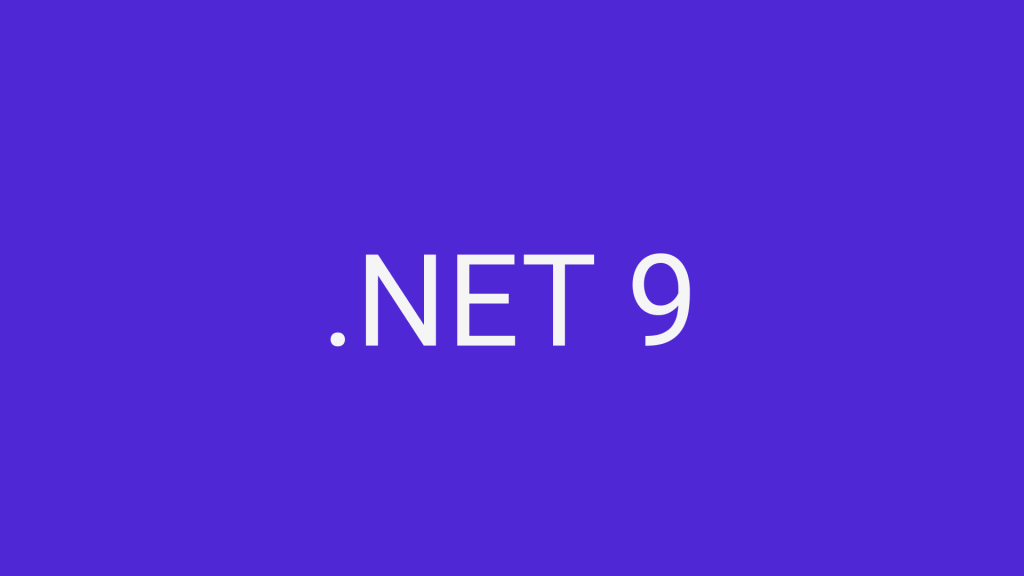Table of content
Statista reports that the global IT cloud market revenue has grown to more than $400 billion by 2021 and will keep increasing in the years to come.
Today, numerous promising cloud solutions emerge, from AIaaS to BaaS. However, the three most popular models remain unchanged: IaaS, PaaS, and SaaS. And, despite the growing interest in cloud services, many still confuse those terms and their meanings.
So what makes the cloud service models different? And which one will suit your business best? We are here to help you find out.
Relying on the rich experience of Devox Software in IT trends, this post will explain the difference between PaaS vs. SaaS vs. IaaS. We will also reveal each model’s benefits and drawbacks and provide examples of SaaS, PaaS, and IaaS service providers.
What Is IaaS?
Infrastructure-as-a-Service (IaaS) is a cloud service model allowing businesses to use an automated and scalable infrastructure delivered by a service provider. It’s a pay-as-you-go solution that involves computing, data storage, and networking resources. With IaaS, IT specialists can access those services via the Internet to develop and deploy the required tools.
In addition to scalability, IaaS is much more flexible and cost-effective than traditional on-premises solutions. Instead of buying and maintaining expensive hardware and servers, small and middle businesses can turn to this convenient on-demand cloud computing solution.
Why Opt for IaaS?
IaaS can be highly beneficial for companies of different sizes and types. Here are the most significant reasons for turning to this solution:
- To save cost. Using an IaaS service is less expensive and resource-consuming than building your in-house solution.
- To boost management effectiveness. Large enterprises can benefit from IaaS and manage their resources wisely. IaaS allows for focusing on more direct business tasks and saves time.
- To scale your business. Companies that expect significant growth won’t have to worry about the system’s scalability.
IaaS Model: Pros and Cons
Organizations can earn multiple benefits when opting for the Infrastructure-as-a-Service cloud service model. The following ones are the most significant.
- Cost-efficiency. IaaS doesn’t require paying for expensive servers and hardware. Instead, you can buy only the services you truly need.
- Flexibility. IaaS is a highly flexible cloud computing model. It allows for changing hardware and software right away if required.
- Scalability. When your business requirements change, you can scale your storage, networking technologies, and servers up or down and adapt to the current audience’s needs.
- Manageability. IaaS solutions facilitate management and control over servers and the entire infrastructure.
- Automation. IaaS automates numerous processes, including data storage, networking solutions, and deployment of servers.
At the same time, when using an IaaS solution, you might face several challenges.
- Security risks. Cloud APIs are centralized, which makes security one of the key concerns of cloud computing.
- Migration challenges. Changing your legacy software and moving to the cloud may be challenging. That is the case for monolithic systems based on outdated technologies.
- Additional training. The employees often get used to the systems they work with. Moving to the cloud-based infrastructure may require time-consuming onboarding.
IaaS Examples
Many companies provide various IaaS solutions and resources, including computing, networking, storage, and load balancers. Here are some of the most remarkable players:
- Amazon Web Services (AWS)
- IBM Cloud
- Microsoft Azure
- Google Compute Engine (GCE)
- Oracle Cloud
- Digital Ocean
- Rackspace
According to Statista, Amazon is the biggest IaaS provider, with a market share of almost 40%. Microsoft comes next with nearly 20%.
What Is PaaS?
PaaS (Platform-as-a-Service) is a cloud computing model allowing companies to buy a platform to create software for particular business needs. Usually, these are tools and frameworks required for custom application development. A third-party provider delivers various services, including the environment for technology execution, web servers, databases, and operating systems.
Similar to IaaS, PaaS is based on a convenient pay-as-you-go model. However, it provides access to a run-time environment and doesn’t involve direct control over operating systems. As for the difference between SaaS and PaaS, the latter allows for a more custom approach to app development.
Why Opt for PaaS?
PaaS is an excellent solution to save time and effort when building a customized web app. Here are several most common reasons for turning to this model.
- To facilitate app development. PaaS streamlines work processes and makes the developers’ lives easier.
- To enhance flexibility. PaaS will allow your employees, contractors, or outsourcing specialists to work on your app from anywhere.
- To save time and cost. Using PaaS is a cost-saving and fast way to build, manage, and maintain custom applications.
PaaS: Pros and Cons
PaaS could be a perfect solution for a small business or startup aiming to reduce time-to-market. Here are the most critical advantages of PaaS:
- Reduced development cost. You can develop a custom app without significant investments.
- Easier migration. With PaaS, you can apply a full or hybrid cloud migration model.
- Decreased time-to-market. PaaS facilitates workflows and allows for building apps much faster.
- Streamlined development. The development process doesn’t require complex and time- and resource-consuming IT solutions.
Now, consider the risks you might need to mitigate when turning to PaaS.
- Security issues. Third-party solutions involve vendors responsible for infrastructure, platforms, and server security. Thus, you need to consider common cloud computing threats.
- Dependencies and restrictions. Your app’s capabilities depend on the vendor’s services. Thus, certain inconsistency and incompatibility issues may arise.
- Migration risks. Not all components of your existing system are easy to move to the cloud. So you might need to rebuild some integrations, apps, and programs.
PaaS Examples
Among numerous companies providing Platform-as-a-Service solutions, here are the most popular and reliable ones.
- AWS Elastic Beanstalk
- AWS Lamda
- Windows Azure
- Google App Engine
- Heroku
- Apache Stratos
- Force.com
Statista claims that in 2019 and 2021, AWS was the key IaaS and PaaS market player, followed by Microsoft Azure and IBM.
What Is SaaS?
SaaS (Software-as-a-Service) is a cloud-based model of software distribution over the Internet. This solution involves a third-party provider responsible for hosting your application. With SaaS, software and hardware management, updates, maintenance, and other services are available and ready to use.
The features listed above make Software-as-a-Service the complete opposite of traditional on-premises solutions. First, it’s subscription-based, while on-premise software is purchased through specific licenses. And second, software and hardware maintenance doesn’t require significant investments since the cloud provider delivers all necessary services.
Why Opt for SaaS?
SaaS is less customizable than PaaS and doesn’t provide full-fledged control over software functionality, performance, and data management. However, on the other hand, this model is easier to apply and maintain since the service provider covers all core IT aspects. Thus, here are the most likely reasons for turning to SaaS:
- To facilitate the development process. Software is ready-to-use and instantly delivered to the end-users via a browser.
- To avoid management and maintenance challenges. The SaaS model doesn’t require much effort in software management, updates, and integrations.
SaaS: Pros and Cons
SaaS benefits small businesses and startups looking for easy and fast ways of building and maintaining their software. Here are the most significant advantages this cloud computing model offers.
- Cost-effectiveness. SaaS is subscription-based and much more affordable than traditional on-premises solutions.
- Scalability. Depending on your business objectives and current requirements, you can scale your project whenever necessary.
- Updates and integrations. SaaS allows for constant updates ensured by the service provider. You can also integrate your app with other SaaS-based software.
- Ready-to-use solutions. All possible cloud computing services are instantly available.
However, the SaaS model involves certain potential downsides as well.
- Lack of control. The SaaS model doesn’t allow you to manage your app’s performance, data security, and downtime.
- Poor management risk. If you don’t manage your SaaS solution properly, it may lead to multiple performance and security challenges.
- Security pitfalls. With the SaaS solution, you will store your data on centralized cloud-based servers, which may result in security challenges, 99% of which are the consumers’ fault.
- Customization restrictions. SaaS enables expanding your app’s functionality and improving the design. However, customization capabilities are not nearly as rich as with PaaS.
SaaS Examples
Software-as-a-Service is the most popular cloud computing model, with multiple providers offering their services. Here are some of the key SaaS players:
- Amazon Web Services (AWS)
- Salesforce
- HubSpot
- Dropbox
- Google G Suite
- ZenDesk
- Canva
- Microsoft Office 365
- Shopify
- Zoom
- Trello
- Oracle Cloud
- IBM
According to Statista, Microsoft is the leader in the SaaS public cloud, controlling more than 15% of the market. Its closest competitors are SalesForce (10%) and IBM (4%).
The Difference Between IaaS, PaaS, and SaaS
So what is the difference between SaaS vs. PaaS v. IaaS? All of them are cloud computing services, and each offers to delegate a certain number of IT management to a solution provider.
The difference between these three cloud computing service models lies in the level of customization and the number of services provided by the vendor. So let’s compare the key components of IaaS, PaaS, and SaaS.
| IaaS | PaaS | SaaS | |
| Cloud-based environment | + | + | + |
| Pay-as-you-go model | + | + | + |
| Networking delivery | + | + | + |
| Data storage delivery | + | + | + |
| Servers delivery | + | + | + |
| Virtualization delivery | + | + | + |
| Development tools and frameworks delivery | – | + | – |
| Customization | + | + | – |
| Ready-to-use software | – | – | + |
| User manages runtime | + | – | – |
| User manages middleware | + | – | – |
| User manages applications and data | + | + | – |
| User manages operating systems | + | – | – |
Here is a detailed IaaS PaaS SaaS diagram showing which IT components you manage on your own and which ones are provided by the vendor.
Public Cloud Market Share: IaaS vs. PaaS vs. SaaS
According to a recent Gartner report, the worldwide end-user spending on the public cloud is approximately $500,000 million in 2022, compared to $410,000 million in 2021. SaaS occupies the most significant market share of more than 35%. It’s followed by IaaS (24%) and PaaS (22%).
At the same time, IaaS is the fastest-growing cloud service, expected to reach an impressive CAGR of 28% by 2026.
Devox Software Experience
We at Devox Software have rich experience delivering high-quality cloud-based solutions with a dedicated end-to-end approach. In particular, our engineers are experts in the technologies required for providing full-cycle SaaS software development services.
We have worked on the Nabed project delivering a secure med-tech solution for clinics, hospitals, and their patients. The tech stack consisted of Angular, .NET.Core, Docker, and AWS. Our team created a user experience and interface for web and tablet apps and developed a platform. The designers created a library containing multiple components and more than one hundred screens. Then, the developers worked on this project for six months.
IaaS, PaaS, or SaaS: Which Solution Suits Your Business Best?
So now, having learned the difference between SaaS, PaaS, IaaS, and other cloud computing specifics, which model should you choose? The answer is simple: pick the one that suits your business objectives. Each cloud-based solution has its benefits and potential downside. Thus, your decision should depend on your individual needs.
So before making your choice, consider your core priorities and focus on what you value most. The most appropriate model will vary, whether it’s control over multiple IT components, custom solutions, or a shorter time to market.
If you need a more in-depth consultation on cloud service models, our professionals are ready to help. We at Devox Software are experts in SaaS development, migration, and robust SaaS solutions. Our services include consulting, UI/UX design, product development, and cloud migration.
Get in touch now, share your ideas, and we will build a solution tailored to your needs.



















